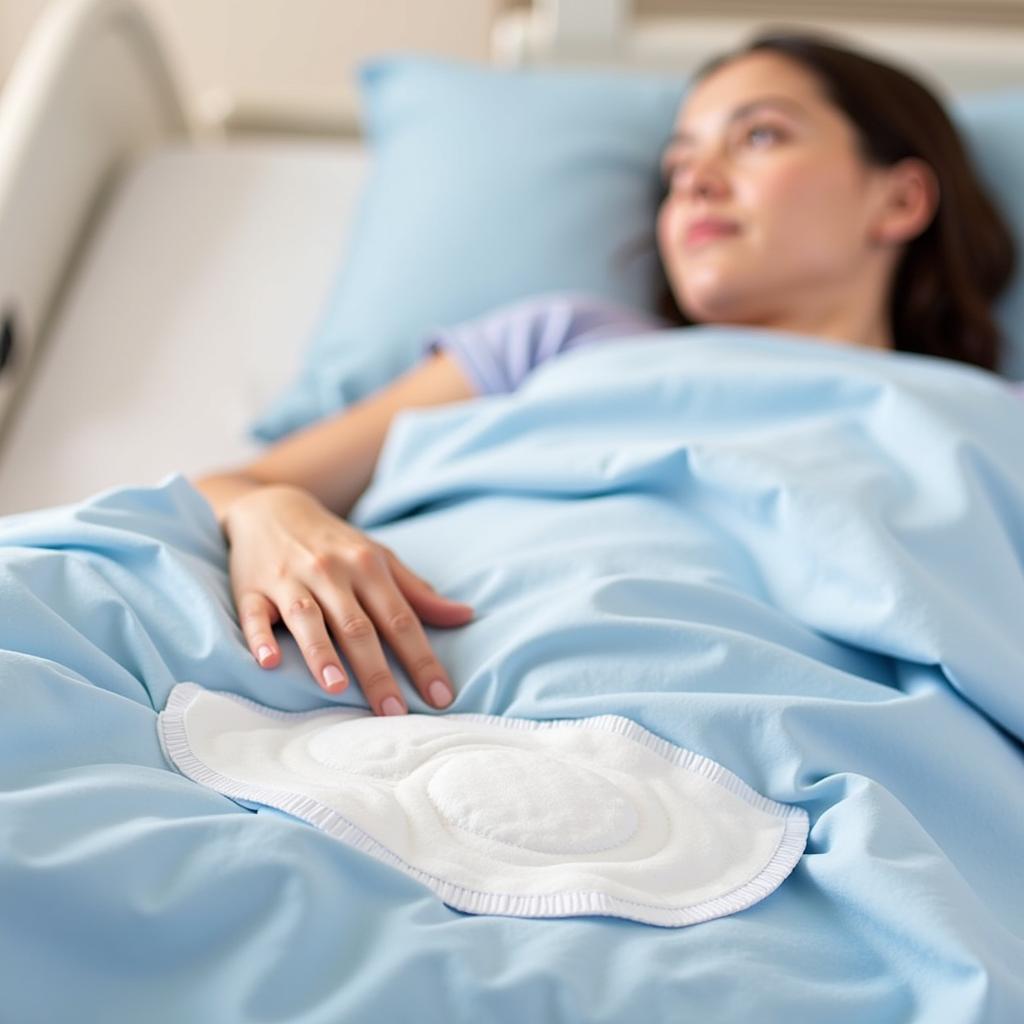Hospital Disposable Bed Pads are essential for maintaining a clean and comfortable environment for patients. They offer a hygienic barrier against bodily fluids and protect bedding from soiling, contributing significantly to infection control and patient well-being. Choosing the right bed pads is crucial for both patient comfort and efficient healthcare practices. Let’s delve into the world of hospital disposable bed pads and explore their benefits, types, and selection criteria.
Understanding the Importance of Hospital Disposable Bed Pads
Hospital disposable bed pads play a vital role in patient care, providing a protective layer between the patient and the bed linens. These pads are designed to absorb fluids, prevent leaks, and maintain a dry and comfortable surface for the patient. This is particularly important for patients with incontinence, wounds, or those recovering from surgery. By using disposable bed pads, hospitals can significantly reduce the risk of cross-contamination and maintain a higher standard of hygiene.
Beyond hygiene, disposable bed pads also contribute to patient comfort. The soft, absorbent materials used in these pads help to reduce pressure sores and skin irritation, promoting faster healing and overall patient well-being. For healthcare professionals, the convenience of disposable bed pads simplifies bedding changes and laundry processes, freeing up valuable time for patient care.
 Hospital Disposable Bed Pads in Use
Hospital Disposable Bed Pads in Use
Types of Disposable Hospital Bed Pads
There are several types of disposable hospital bed pads available, each designed for specific needs and levels of absorbency. Some common types include:
- Standard Absorbency Pads: Ideal for light to moderate incontinence or general fluid protection.
- Maximum Absorbency Pads: Designed for heavy incontinence or post-operative care, offering superior fluid containment.
- Bariatric Bed Pads: Specifically designed for larger patients, providing extra coverage and absorbency.
- Underpads with Adhesive Strips: Feature adhesive strips to secure the pad to the bed, preventing shifting and bunching.
Choosing the Right Hospital Disposable Bed Pads
Selecting the right hospital disposable bed pads involves considering several factors:
- Absorbency Level: Choose a pad with the appropriate absorbency level to meet the patient’s needs.
- Size and Dimensions: Ensure the pad fits the bed properly and provides adequate coverage.
- Material and Comfort: Opt for soft, breathable materials that promote patient comfort and reduce skin irritation.
- Cost-Effectiveness: Balance quality and cost to find a solution that meets budgetary requirements.
“Choosing the right bed pad is about balancing patient comfort, hygiene, and practicality,” says Dr. Emily Carter, a leading geriatric specialist. “A well-chosen pad can significantly improve the patient experience and contribute to a more efficient healthcare environment.”
Maintaining Hygiene and Comfort with Disposable Bed Pads
Proper usage and disposal of hospital disposable bed pads are crucial for maintaining hygiene. Regularly changing the pads, especially when soiled, is essential to prevent bacterial growth and maintain a clean environment. Always follow proper disposal protocols to minimize the risk of infection.
Tips for Effective Usage
- Change the bed pad regularly, even if it doesn’t appear fully saturated.
- Ensure the pad is placed correctly to maximize coverage and prevent leaks.
- Dispose of used pads properly in designated receptacles.
disposable pads for hospital beds
“Maintaining hygiene isn’t just about using disposable pads; it’s about using them correctly,” emphasizes Nurse Practitioner Sarah Miller, an expert in infection control. “Proper usage and disposal are critical for creating a truly hygienic environment.”
Conclusion
Hospital disposable bed pads are indispensable for maintaining hygiene and ensuring patient comfort in healthcare settings. By understanding the different types available and choosing the right pad for each patient’s individual needs, healthcare professionals can contribute to a cleaner, safer, and more comfortable healing environment. Choosing high-quality hospital disposable bed pads is a key factor in providing optimal patient care.
FAQ
- How often should hospital disposable bed pads be changed?
- What are the different sizes of hospital disposable bed pads available?
- Are hospital disposable bed pads biodegradable?
- What are the key differences between standard and maximum absorbency pads?
- Can hospital disposable bed pads be used at home?
- How do I choose the right absorbency level for a patient?
- What are the benefits of using disposable bed pads over reusable ones?
Common Scenarios and Questions
- Scenario: A patient is recovering from surgery and requires a highly absorbent bed pad. Question: Which type of disposable bed pad is best suited for post-operative care?
- Scenario: A caregiver is looking for a cost-effective solution for managing light incontinence. Question: What are the most affordable options for disposable bed pads?
Further Information
For more information on washable bed pads, please visit our page on hospital bed pads washable.
For any assistance, please contact us at Phone Number: 02437655121, Email: [email protected] or visit us at: No. 298 Cau Dien Street, Minh Khai Ward, Bac Tu Liem District, Hanoi, Vietnam. We have a 24/7 customer service team.